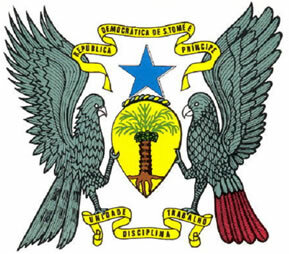An African country, São Tomé and Príncipe has no land borders and is located in the Gulf of Guinea, in the Atlantic Ocean, more than 300 thousand meters from the nearest countries (Gabon, Equatorial Guinea and Cameroon). The nation is part of the Community of Portuguese Language Countries, as Portuguese is the official language.
In 1470, Portugal began the colonization process in São Tomé and Príncipe. The colony was used as a trading post, mainly for slaves captured in Africa. The colonizers also introduced the cultivation of sugar cane, using slave labor. After 490 years under Portuguese rule, the independence movements were strengthened from 1960 onwards and, in 1972, the Movement for the Liberation of São Tomé and Príncipe (MLSTP) emerged. National autonomy was achieved in 1975, and the MLSTP took over the country's government as a single party.
The territory, mountainous and covered by tropical forests, is formed by two main islands (São Tomé and Príncipe) and several islets. Most of the population resides in the capital, São Tomé. According to data from the United Nations (UN), approximately 50% of the inhabitants live below the poverty line, that is, on less than 1.25 dollars a day.
The main economic activity in Tomé and Príncipe is cocoa production. However, tourism and the exploration of oil deposits discovered in the late 1990s provided a significant increase in the capture of financial resources.

Coat of Arms of São Tomé and Príncipe
São Tomé and Príncipe data:
Territorial extension: 964 km².
Location: Africa.
Capital: São Tomé.
Climate: Equatorial rainy.
Government: Republic with mixed form of government.
Administrative division: 2 islands and 7 districts.
Languages: Portuguese (official), regional languages.
Religions: Christianity 95.5% (Catholic 80%, independent 7%, others 8.5%), others 3.3%, no religion and atheism 1.2%.
Population: 162,755 inhabitants. (Men: 80,609; Women: 82,146).
Composition: 95% Africans, 4% Eurafricans, 1% Portuguese.
Demographic density: 168.8 inhab/km².
Average annual population growth rate: 1.6%.
Population residing in urban areas: 61.43%.
Population residing in rural areas: 38.57%.
Illiteracy: 12.1%.
Life expectancy at birth: 65.2 years.
Infant mortality rate: 64 deaths per thousand live births.
Households with access to clean water: 86%.
Households with access to a health network: 24%.
Human Development Index (HDI): 0.488 (average).
Currency: Fold.
Gross Domestic Product (GDP): 175 million dollars.
GDP per capita: 912 dollars.
External relations: World Bank, IMF, UN, AU.
By Wagner de Cerqueira and Francisco
Graduated in Geography
Brazil School Team
countries - geography - Brazil School
Source: Brazil School - https://brasilescola.uol.com.br/geografia/sao-tome-principe.htm

